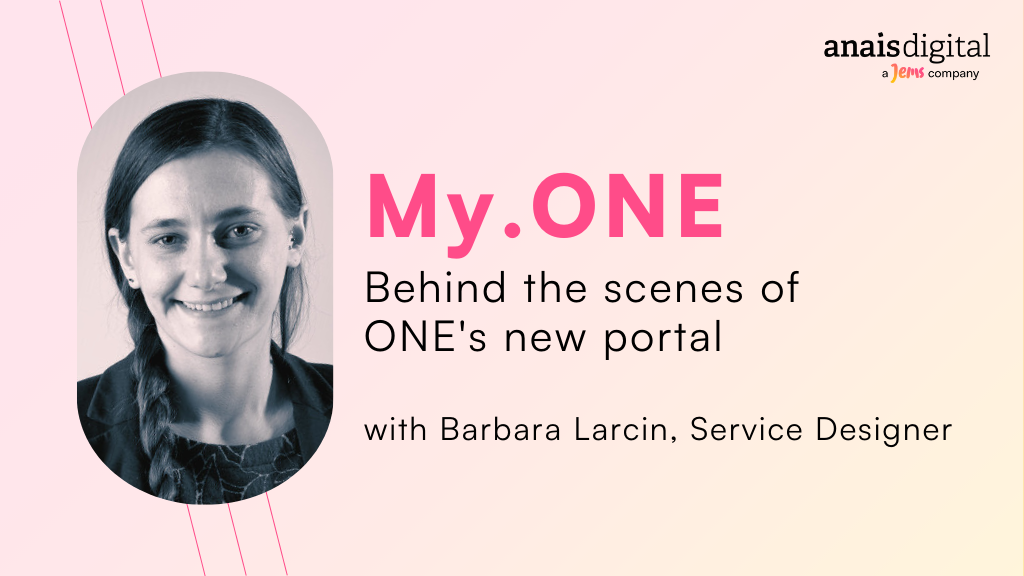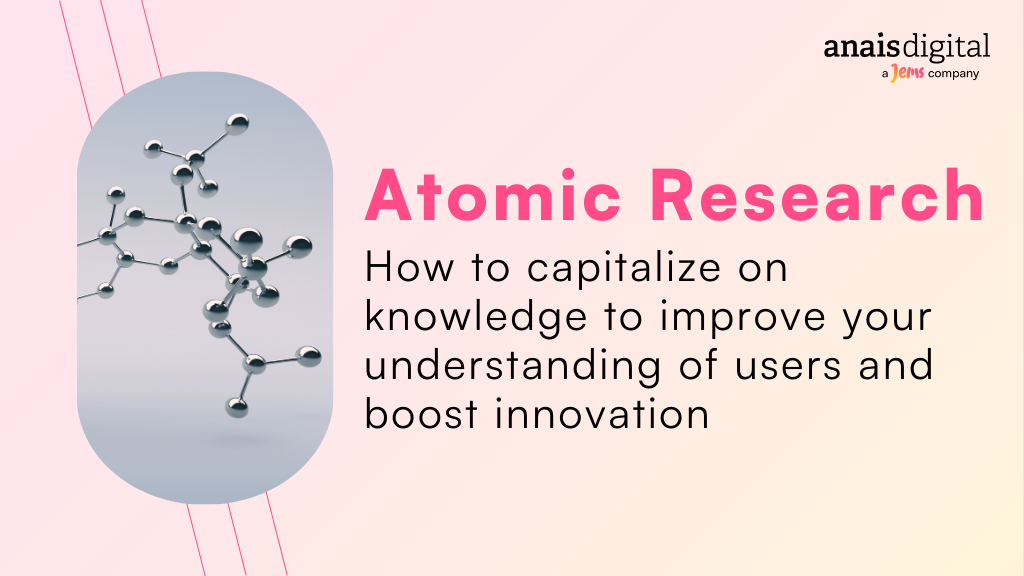
In user research, it is common to produce high-quality results without fully exploiting all the reports, deliverables and documents generated. Often scattered and poorly maintained, they end up being forgotten or poorly exploited. This is precisely the problem that Atomic Research proposes to remedy.
Find out in this article how this method is revolutionizing the way we manage and leverage our user research.
We will cover:
- What is atomic research,
- Why adopt atomic research in UX,
- How organizations can implement such a process to improve their understanding of users and accelerate innovation.
What is atomic research?
Atomic search in UX is a process of decomposing, interconnecting, preserving, and sharing information from various user search methods within a single organization.
Initiated by Daniel Pidcock, it can be defined as: “a new way to organize UX knowledge in an infinitely powerful way”.
Why adopt atomic research in UX?
Atomic UX research emerges in organizations whose UX maturity is high enough to become a standard. The results and conclusions of user research analyses become a reference accessible to all teams.
However, user insights are often scattered or stored only in reports, presentations or dashboards, all isolated and often overlooked.
Atomic UX research aims to make this knowledge consistent and persistent within the organization. This way, designers, product managers, project managers, marketers and other members of the organization have easy access to information and user understanding.
This approach is essential for user-centric organizations that want to innovate by remaining empathetic to their customers while avoiding wasting resources on unadopted solutions. It also accelerates new research projects by capitalizing on existing knowledge and facilitates the integration of new collaborators into the organization.
By implementing an atomic UX research process, the organization equips itself with the tools necessary for continuous improvement based on research that is constantly fed with new knowledge that is centralized, curated and shared.
How to proceed?
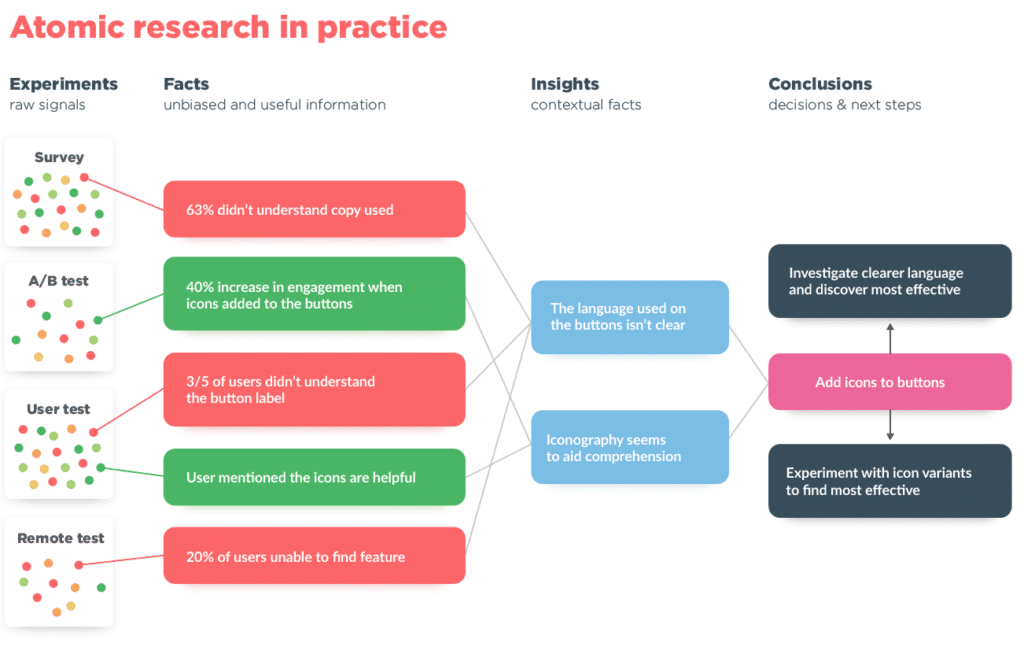
The first step is to identify the sources of information to list all the data relevant to the users’ understanding.
Among them, we can mention:
- interviews on user needs,
- quantitative surveys,
- user testing,
- card sorting and tree testing,
- analytical data,
- logs,
- customer service records,
- responses to satisfaction questionnaires,
- observation, field immersion, and
- AB testing.
These sources of information make it possible to formalize each user behavior or opinion by stating a fact, which will then be recorded in a database. Indi Young’s work on the Mental Model Diagram serves as a reference for the steps to follow.
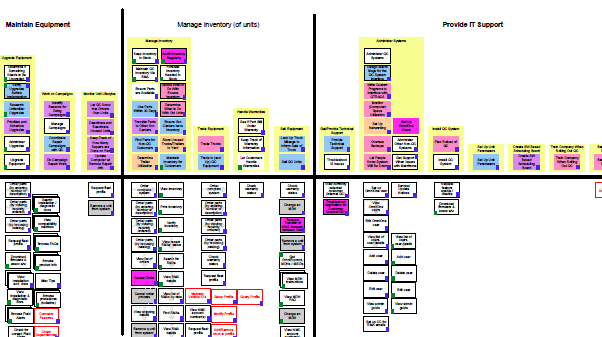
The source of the information is kept to ensure the relevance of the facts and to facilitate their reformulation if necessary.
Metadata is associated with these facts, such as:
- predefined themes,
- number of occurrences,
- links to captures (videos, screens, audio, heatmaps, etc.),
- personas,
- emotions,
- product lines,
- journeys, and
- context.
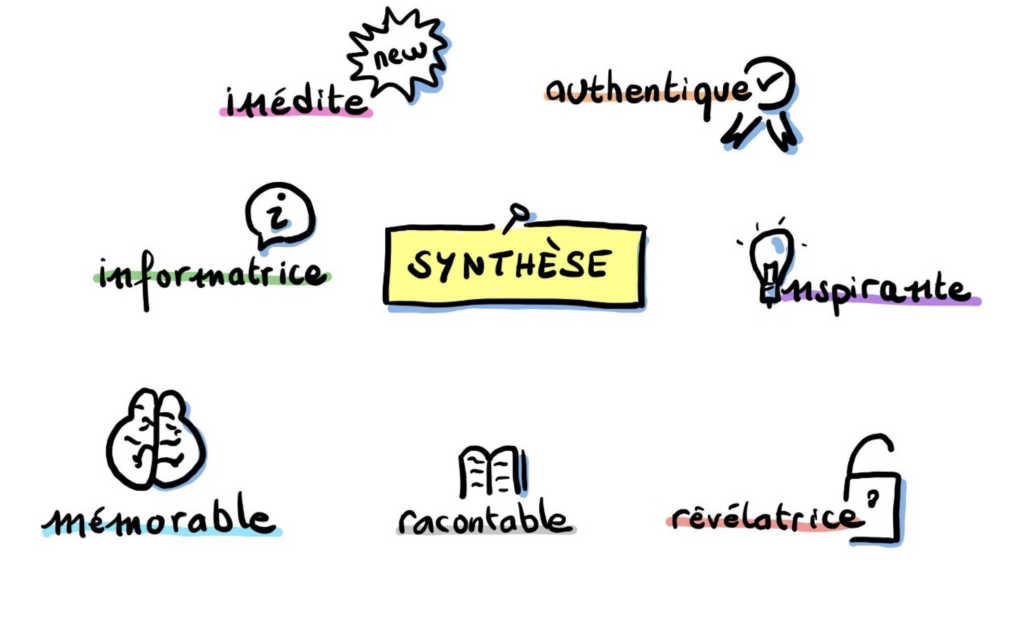
Then, an interpretation is associated with one or more facts, resulting from the research team’s understanding.
These syntheses are characterized by:
- their authenticity (based on facts)
- their originality (attention-grabbing),
- their ability to inform and reveal (bringing knowledge and transversal understanding for a persona or a customer journey),
- memorable (associated with visuals or recordings), and
- inspirational (inspiring action, innovation, creation and improvement).
We can then speak about “molecules of atoms“, underlining the interconnection between atoms and molecules. The syntheses are also identifiable by the metadata associated with them.
The last level of atomic user research concerns recommendations, i.e. actions to be taken in response to the summaries (insights).
Using a UX Atomic Research Canvas facilitates this process.
https://www.figma.com/community/file/1108246172245280194/Atomic-UX-Research-Canvas-(Community)
Atomic Design: What tools and what operational framework?
To ensure the effectiveness of a shared user search system, it is essential to have structured and usable information via a digital tool.
In this regard, we recommend the use of two types of tools:
- Standard and customizable database management tools, such as Airtable, Jira, Monday, that can adapt to the user’s specific research workflow; or
- Dedicated tools, such as Glean.ly, Dovetail, Condens, Consider.ly or Aurelius, which offer less customization but immediately meet the requirements of a directory of atoms and insights.
From an organizational point of view, Atomic UX Research aims at breaking down the silos between the different departments of the organization. Thus, it fits perfectly into the three pillars of SCRUM:
- transparency,
- inspection, and
- adaptation.
Finally, the framework also involves openness to various methodologies for gathering user feedback and constant access to end users.
Conclusion
Atomic UX research is a revolutionary way to organize and share UX knowledge, enabling user-centric organizations to innovate and remain empathetic to their customers.
By decomposing, interconnecting and preserving information from various methods (interviews, surveys and user tests, …) of user research, this approach facilitates cross-departmental collaboration and increases transparency. To implement atomic UX research, organizations need to identify relevant information sources, choose appropriate tools to manage databases and be open to different methodologies for collecting user feedback. With this approach, organizations will be able to improve their understanding of users and accelerate innovation while capitalizing on existing knowledge and easily onboarding new employees.
Ultimately, the most important benefit of Atomic Research UX is improved user understanding, which leads to faster and more focused innovation.








